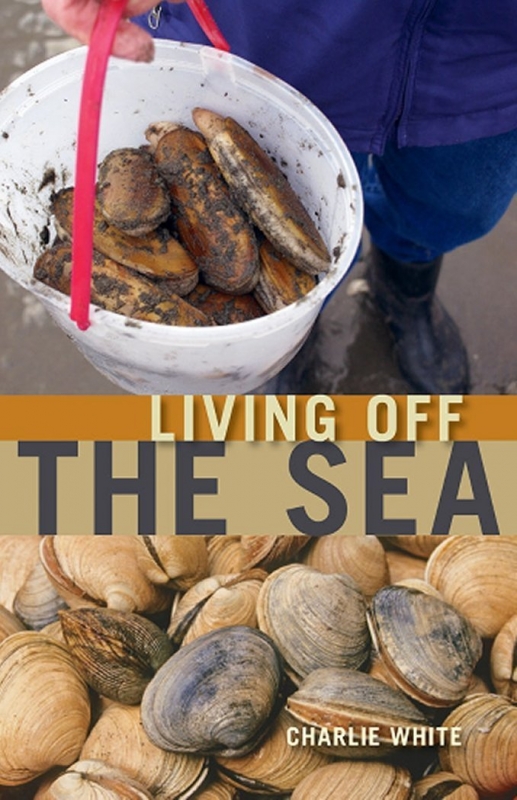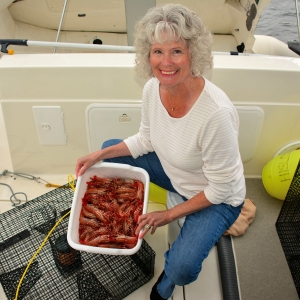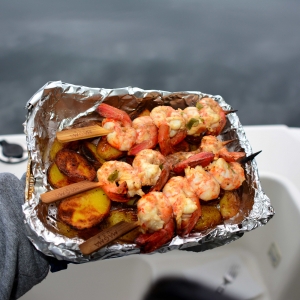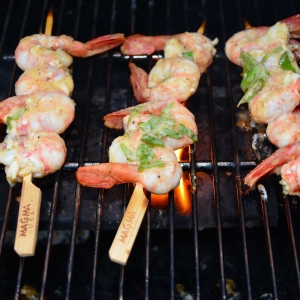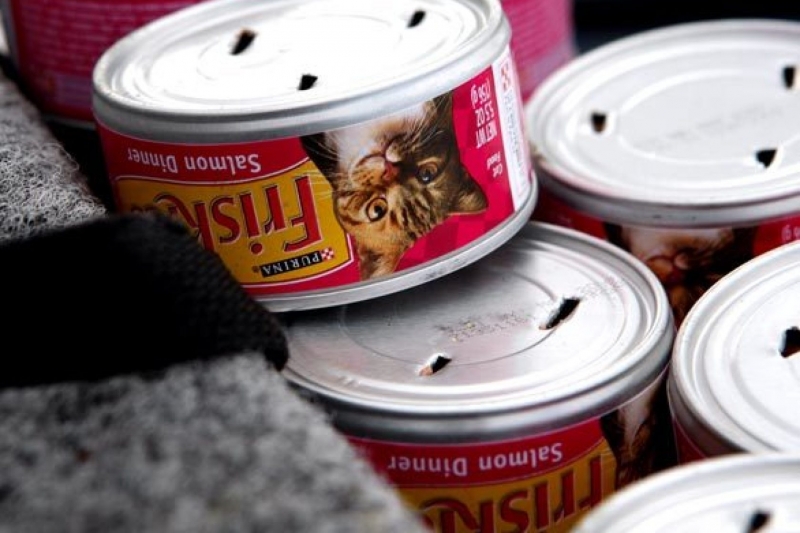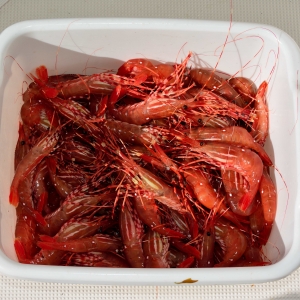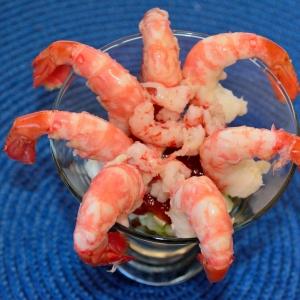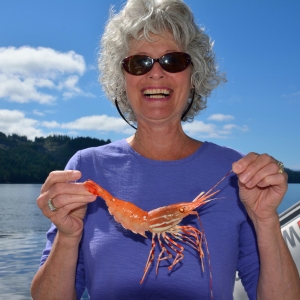Spot Prawns – The only thing easier than catching them is eating them
13th May 2020
Catching Spot Prawns
Harvesting a seafood meal has always been a highlight of boating the British Columbia Coast. With a coastline indented by numerous majestic fjords, its deep inlets are a perfect environment for healthy populations of Pandalus platyceros, otherwise known as the Pacific or spot prawns.
This Pacific coast delicacy is the rage of seafood connoisseurs. British Columbia spot prawns have a wonderful flavor and texture. Their sweet, delicate lobster-like flavor make them a favorite for grilling, steaming, or as peel and eat. Due to these culinary attributes, spot prawn lead in popularity among all types of shrimp and are part of a robust commercial fisheries. And because they reside at reasonable depths in enough quantities, recreational harvesting is greatly anticipated by boaters wanting to try their luck.
Since all spot prawns harvested are caught with pots, a sustainable fishing method with a relatively low amount of bycatch and habitat damage, they are considered an ocean-friendly seafood choice.
Spots are the largest shrimp caught on the Pacific West Coast, measuring 9 to 12-inches in length and ranging from Alaska to Baja California. They are easily recognized by size and their deep pink/red or pink/orange body with white lines on the head and two pairs of white spots on the tail end.
These giant shrimps inhabit rocky seabed at depths as great as 1,500-feet where they hide from predators and forage on other shrimp, plankton, small mollusks, worms, sponges, and dead organic material.
As hermaphrodites, they spend the first part of their lives as male then undergo a sex change in mid-life, transitioning to female for the duration of their existence. As females, they often have two or more broods before dying. To conserve prawn populations, it is mandatory to release egg-bearing females. Eggs are generally present on females from October through March.
Know the Regulations
Every person prawning in BC waters is required to purchase a Tidal Waters Sport Fishing License. They are available at most tackle shops, marinas and online (www.pac.dfo-mpo.gc.ca/recfish).
Recreational prawning season varies from area to area. Before heading out, be sure to check the Fisheries and Oceans Canada website for seasons, limits, catch reporting and equipment requirements, and any emergency closures.
BC’s commercial season usually begins in early May. It is a good idea to avoid areas where a commercial fisherman has set traps, thus avoiding possible entanglement and or conflict. Suggest waiting to fish the area until well after the commercial season so stocks can rebuild in the area, this will increase your chance of success.
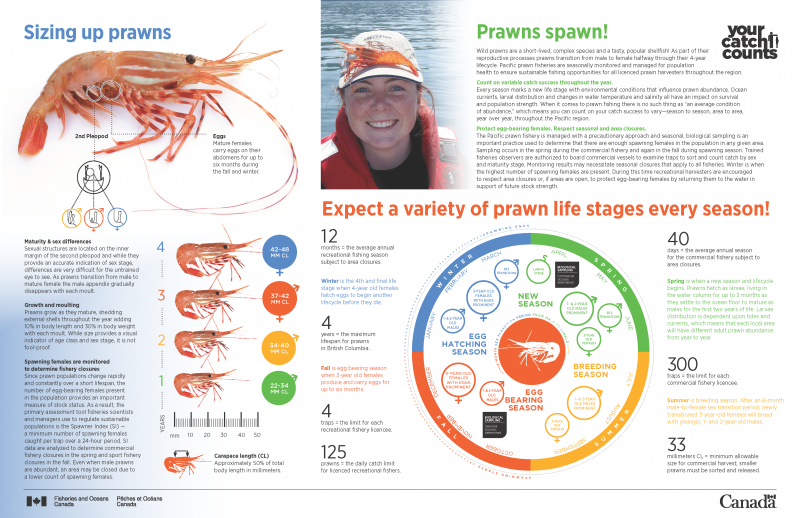
(Image: Fisheries and Oceans Canada)
Equipment
Traps come in all shapes sizes and materials. There are round, rectangular, and square box traps, even igloo shaped ones. They can be enclosed by plastic, synthetic or steel mesh. Most fishing tackle and marine supply stores sell a variety of prawn traps. Two traps to consider are the stackable full frame round trap or, if storage space is limited, a collapsible rectangular box trap that folds flat. Better traps have frames made from marine-grade stainless steel with three one-way conical entrance ramps for round traps and four entrances for rectangular box traps.
If the traps you purchase are not weighted, suggest installing weight so the trap will not move once placed on the bottom and you will not have to search for it when it’s time to retrieve the trap. Ten pounds of lead secured in the trap will do the job nicely. Also, if the trap moves while sitting on the seafloor, the movement will spook the prawns and limit your catch.
Because prawn traps are set in deep water, you will need 400 to 450-feet of 5/16”-diameter lead line, which will hang almost vertically from an inflatable fluorescent red or orange buoy large enough to keep from submerging in the current. Sinking line is important so passing boats will not snag it, get entangled and possibly do damage. The buoy is required to be marked with your name and phone number with 3-inch letters and numbers.
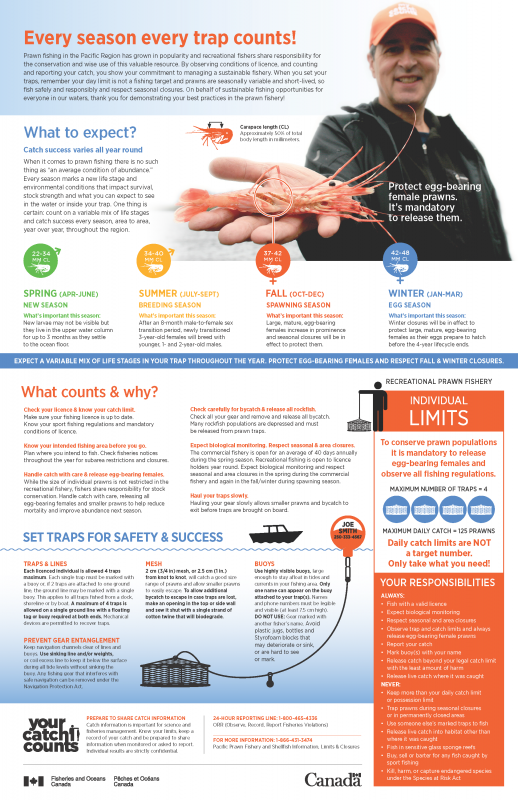
(Image: Fisheries and Oceans Canada)
Bait
There are as many bait options as there is boaters. Prawns feed by scent and are not fussy about what they like to eat. What is important is to offer a bait that will get a scent in the water column quickly to draw prawns into your trap. Baits include fresh herring, salmon, sardines, or mackerel. A better alternative is to use commercially available prawn bait pellets. They are made from fresh fish, fishmeal, and fish oil. The use of the pellets is less messy than fresh bait.
Many recreational prawners like to add commercially rendered fish oil to the pellets, thereby enhancing the scent trail down current from the trap making it easier for the prawns to find the bait. Some also add a can of seafood cat food to the mix. Suggest making the mixture the day before and storing on ice in an airtight container, this will allow the pellets to absorb the oil and keeps the mess off the boat. Though convenient, pelletized bait and fish oils are very fishy, so avoid getting any on your hands or on the deck of your boat. Wearing gloves when making the mixture and baiting the trap is a good idea.
Hanging the bait between the entrance tunnels in a perforated plastic bait container is tantalizing for the prawns. This allows the scent trail to be at entrance level making it easier for the prawns to enter the trap and find the bait inside.
(Image: LA Times)
Location
Most recreational prawners like to drop their traps in deep, protected inlets with gentle tidal flows. Prime prawning spots are usually near steep and rock shorelines. Use nautical charts or your chart plotter to find locations with hard, level bottoms in about 285 to 375-feet of water along an edge of steep gradients.
Since the traps will be placed as much as 375-feet of water, you do not want to be pulling up empty traps. The number one rule of fishing is to fish where the fish are. This is also true when prawning. Once in a prospective area, slowly motor around the site with an eye on the sonar, watching the bottom to find the narrow, clearly defined bottom that prawns prefer. Also be looking for a cloud that looks like a ball of bait on the bottom, that cloud most likely is prawns.
Before arriving in the area all the gear is readied for deployment and the bait containers are loaded. Once a promising location is identified the boat is stopped dead in the water and the trap is placed over the side. With the weight added to the trap it will drop quickly. Once on the bottom, raising the pot several times will churn things up and gets the bait and scent flowing in the current. Then mark the location on the chart plotter/GPS and let the rest of the line out and finally the buoy.
Reaping the Reward
Some recreational prawners let their traps soak for an hour or two before retrieving and others like to leave them down through a tide change or even overnight. To retrieve the trap, slowly approach the buoy from downwind to avoid running over the trap line, remember the trap will be located up wind from the buoy. Pick up the buoy and move the boat forward to get directly over the trap.
If you are “spot on”, your trap will be heavy with luscious crustacea – worth every bit of the work and effort. With the extra weight, pulling traps by hand is hard work. The use of a pot puller or hauler makes retrieval much easier and well worth the money spent. They can be mounted on a downrigger base and plug into the downrigger’s 12-volt outlet.
As the spot prawns are removed from the trap and counted, place them in a plastic bucket of seawater. It only takes a few minutes for them to expel much of the food they have eaten. The bait container is emptied, reloaded and the trap is returned to the seafloor. Once the pots are back down and reset, the prawn heads are removed with a twisting motion, bodies are rinsed and placed in a plastic container and then quickly put in the cooler.
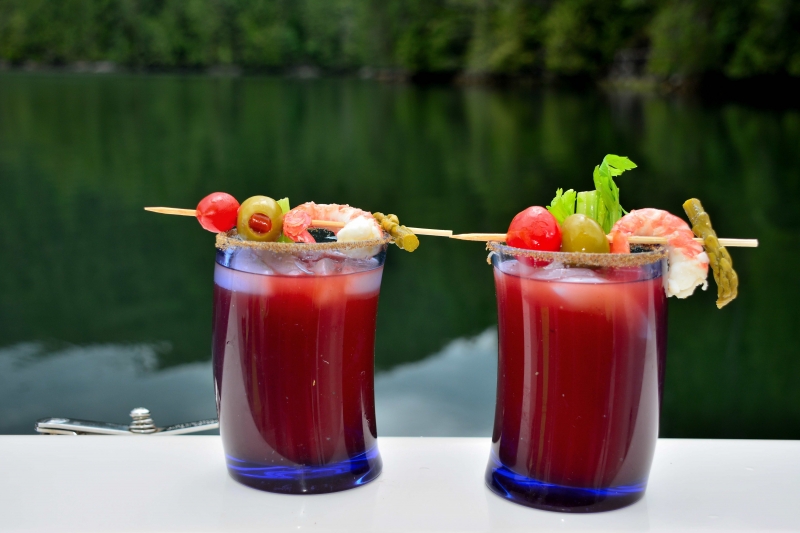
Prawns do not require much preparation before eating. For many spot prawns are best eaten when fresh, steam cooked only briefly, chilled, then served with cocktail sauce and your favorite happy hour beverage. All making a fitting ending to a successful day on the water.
For additional information on how to catch shrimp and prawns, suggest books by Charlie White titled How to Catch Shellfish and Living Off the Sea.
